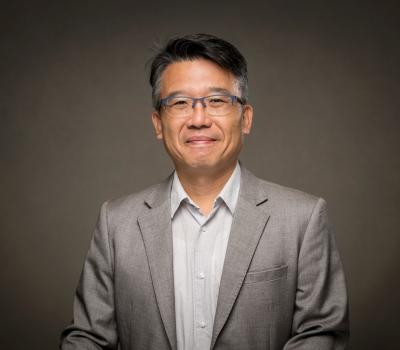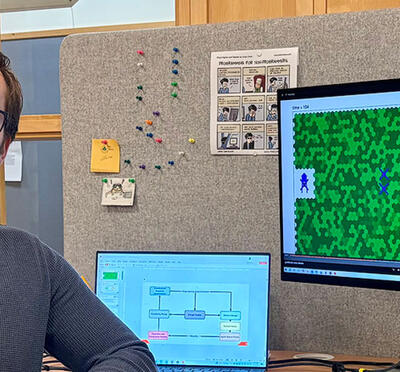In 2012, Oregon State researchers partnered with the National Energy Technology Laboratory to develop an ultrasensitive, low-cost sensor that was capable of detecting trace amounts of carbon dioxide. NETL, which reports to the Department of Energy, needed the device to check for leaks from huge underground vaults where coal- and gas-fired power plants sequester carbon dioxide.
The result was a near-infrared gas sensor that incorporates plasmonic nanoparticles on a metal-organic framework. A patent was issued for the device in April 2019 (U.S. Patent No. 10,274,421). A complete and practical detection system can be created by hooking the sensor to commercially available photodetectors and infrared laser light sources.
“The sensor is a safety precaution,” explained co-inventor Alan Wang, an associate professor of electrical and computer engineering. “When so much gas is stored underground under high pressure, there’s a potential for leakage. NETL must monitor that to minimize the amount of carbon dioxide, a primary greenhouse gas, that’s released into the atmosphere.”
Infrared absorption sensors play a pivotal role in analytical chemistry and are highly effective for detecting and identifying trace-level gases. In a typical infrared gas sensor, infrared light passes through an air sample collected from the environment.
Because individual gases absorb the light at specific wavelengths, they can be identified by their absorption bands, which serve as molecular fingerprints for targeted molecules — carbon dioxide in this case.
The sensor element itself consists of a short length of a fiber-optic core coated with a metal-organic framework and plasmonic nanocrystals made from either indium tin oxide or copper sulfide. MOFs are hybrid organic-inorganic crystalline structures made of metal ions connected by organic linker molecules.
“Because of their high porosity and extremely large surface areas, MOFs quickly adsorb large volumes of gas from the environment,” said Chih-hung Chang, a professor of chemical engineering and co-inventor. “The plasmonic nanocrystals then act like lenses to concentrate and focus the infrared light source. Because infrared absorption is proportional to the intensity of the light, when that light is concentrated, as it is in our system, then absorption is greatly enhanced. That means the sensor can detect even minute amounts of the target gas molecule.”
Traditionally, gas sensors use mid-infrared technology, largely because more gases have absorption bands in the mid-infrared spectrum. But they’re difficult to transport and expensive, costing upwards of $20,000, according to Wang. Near-infrared sensors are far less costly, but also less sensitive.
“We want to bridge the gap between the two types of sensors,” Wang explained. “While our sensor is less sensitive than mid-infrared systems, it is an order of magnitude more sensitive than other near-infrared sensors, and it’s much more cost-effective.” He projects that a mass-produced version of the device could cost a few hundred dollars apiece.
Though the sensor was designed to detect carbon dioxide, it’s also capable of detecting other gases, such as methane. Potential applications include monitoring natural gas pipelines for leaks and checking carbon dioxide levels in food storage facilities and agriculture greenhouses, which must maintain the gas concentration within a certain range. The sensor could also be used as a diagnostic tool in combustion engines.
In an extension of their patented technology, the investigators are developing a miniaturized spectrometer into which they can incorporate a variation of the MOF-plasmonic nanoparticle sensor. The research is funded by a National Science Foundation grant.
“Spectrometry still requires benchtop equipment, which is bulky and costly,” Wang said. “We’re developing a very small, highly portable spectrometer that fits onto a chip, which will allow spectrometry to be conducted in the field. There’s no way to do that now.”




